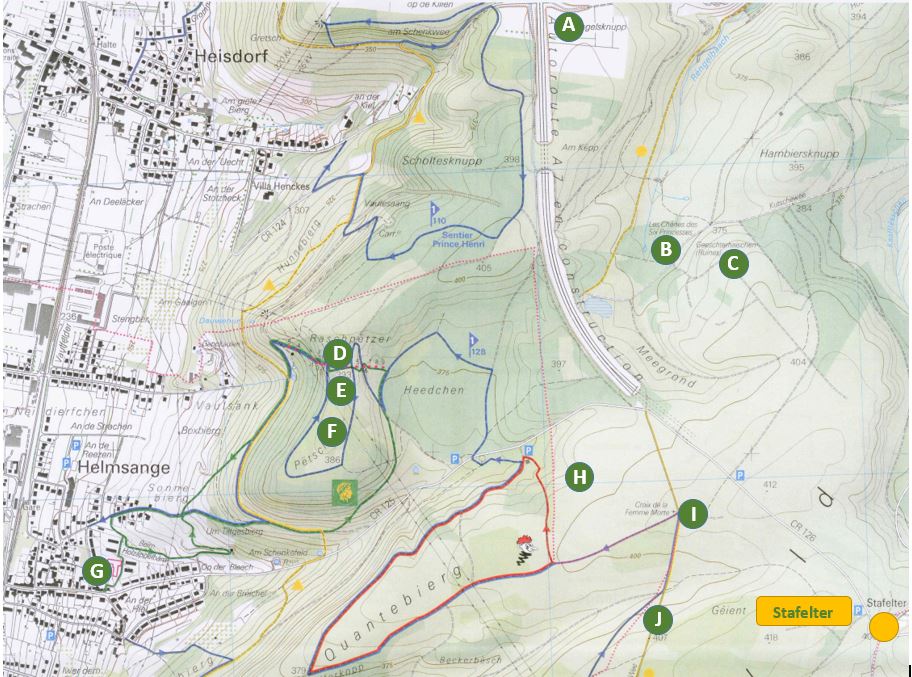 At the « Stafelter » the territories of the three municipalities of Niederanven, Steinsel and Walferdange come together and there the Grünewald, declared national monument, shows many historic and cultural treasures, spread all over this region. The oldest discoveries are dated Stone Age. It is really worthwhile to take a look at the neighbour municipalities of Walferdange and Steinsel.
At the « Stafelter » the territories of the three municipalities of Niederanven, Steinsel and Walferdange come together and there the Grünewald, declared national monument, shows many historic and cultural treasures, spread all over this region. The oldest discoveries are dated Stone Age. It is really worthwhile to take a look at the neighbour municipalities of Walferdange and Steinsel.
 Tools and arrowheads dated Stone Age
Tools and arrowheads dated Stone Age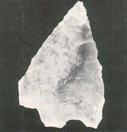
Many tools and arrowheads dated Palaeolithic; Mesolithic and Neolithic were found on the hills of Walferdange and Steinsel, confirming early stone age settlement.
 “The oak of the 6 princesses”
“The oak of the 6 princesses”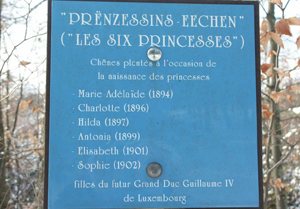
It was between 1894 and 1902 that in honour of the 6 princesses of Luxembourg, the later Grand-Duchess Charlotte, Antonia, Marie-Adélaïde, Elisabeth, Hilda and Sophie 6 oaks were planted here and called the “6 princesses”.
 «Geeschterhäischen»
«Geeschterhäischen» 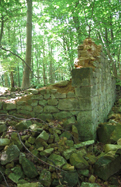
The « Geeschterhaischen » (meaning ghost house) located near the « Réngelbur » served once for the hunting lodge of the Grand-Duke Adolphe and William.
 Ring rampart
Ring rampart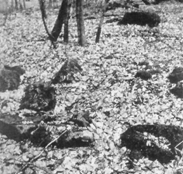
At “Pëtschend” you can find the remains of an old circular rampart. It is showing a part of the rampart, protecting the the “Pëtschend” hill at its weakest point. The origin date of the rampart however remains undefined (maybe Celtic- or Hallstatt period).
 “Raschpëtzer Qanat”
“Raschpëtzer Qanat”
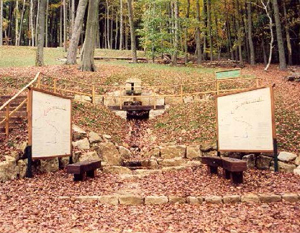 In Walferdange, you can find the remains of an old water supply system of Roman time, constructed in the “Qanat” management way. This system of Celtic origins is made up of a tunnel with a slight slope of 300 m length, of a small water gutter, helping the water to flow off and of upright pits, connecting the tunnel with the mountain top.
In Walferdange, you can find the remains of an old water supply system of Roman time, constructed in the “Qanat” management way. This system of Celtic origins is made up of a tunnel with a slight slope of 300 m length, of a small water gutter, helping the water to flow off and of upright pits, connecting the tunnel with the mountain top.
 Stone Age dwelling
Stone Age dwelling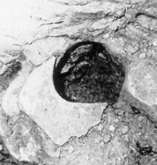
When excavations had been done at “Pëtschend” they found a pile hole from a wooden dwelling construction, dating probably from Neolithic times. It is unknown if this construction had been used as a dwelling in Neolithic times or later on in Celtic times as a refuge.
 Roman “Villa”
Roman “Villa”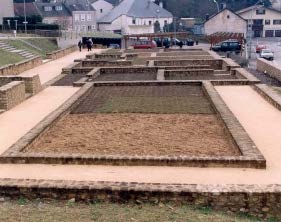
The remains of a Roman house were found in Helmsange, where several dwellings were constructed along the river Alzette, all at the same altitude (250 m) and equispaced. It is supposed that these houses were all related among each other and with the higher situated Roman road by developed streets.
 Sepultural site
Sepultural site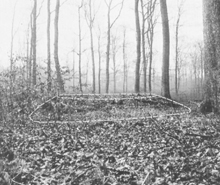
It is possible that the small elevation in the Grünewald had once been a sepultural site in Bonze Age or even earlier times (f.ex. Hallstatt period).
 “Doudeg Fra” (Dead Woman)
“Doudeg Fra” (Dead Woman)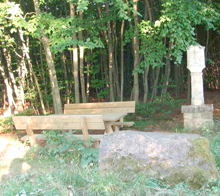
Up to the middle of the 20th century a crucifix, erected on several stone blocks, stood here on this place. In 1982 it had been replaced by a new road crucifix showing, according to the old national tradition the crucifixion scene.
 Roman roads
Roman roads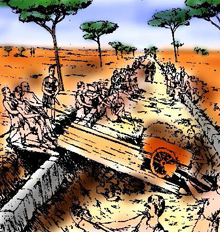
Several Roman roads crossed the Grünewald. It is supposed that it had not been main streets but only cross streets, shorter connections between the Arlon-Treves line. Along the Roman roads to Stafelter several Roman tombs were discovered (cremation sites with urn fragments).
